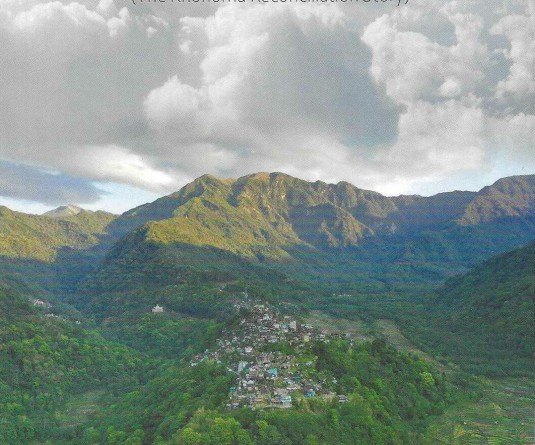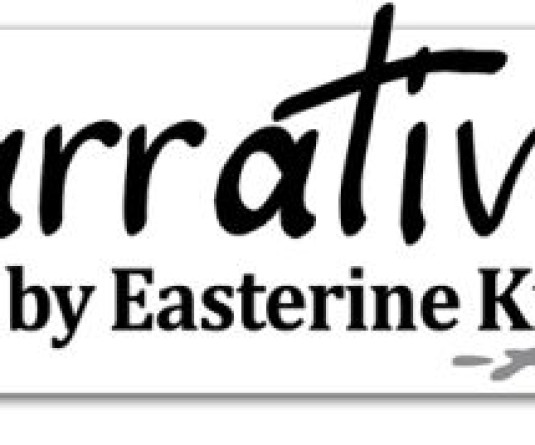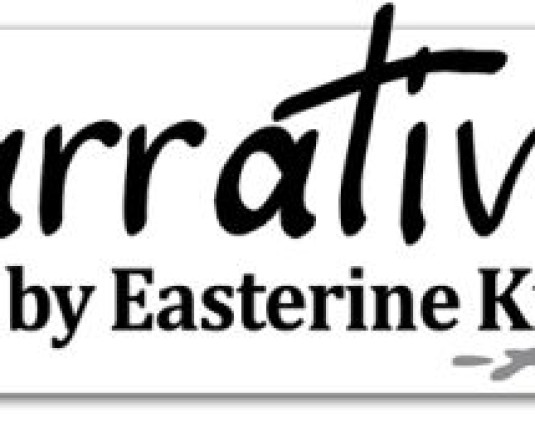
Easterine Kire
Part verbal history and part fastidious chronicling of historical and official records by colonial administrators and anthropologists, the book ‘The Battle of Khonoma and other Essays’ by Charles Chasie is a valuable addition to the growing body of literature on Naga history. The writer has assiduously collecteddata, from oral informants,andfrom available historical records. The writer has been able to document local history that is time-bound, even as community memory is being depleted by the deaths of its members.
In the essays, the author looks at historical processes and their effects upon an isolated population of mountain people, how they were brought, against their will, into the modern world, confronted with loss of land, loss of identity and loss of life, hemmed in by military excesses, controlled by government acts, made to give up old ways and conform to a new way of life that challenged all that they had believed in.
Some precious information and knowledge has been culled from a little-known source. Lhoulienyü Suokhrienuo’s book, ‘An Outline History of India,’ a documentation of the Battle of Khonoma, and a commentary on British rule in the Naga Hills.
The title piece, ‘The Battle of Khonoma’ is community history. The well researched presentation shows how unwritten history is documented. This is the empire writing back from a Nagacentric position.
British entry into the Naga hills took place in 1832 after the Treaty of Yandabo had ceded Assam and Manipur to the British. The imperial forces wanted to connect its two newly acquired territories, but Britishpresence was fiercely resisted every step of the way.
Chasie states,‘Nagas have always been fiercely independent and stoutly defended their territories against any outside force vehemently.’ He names the Battle of Kikrüma and the Battle of Khonoma, commenting that the latter is more known because ‘it was the last village in the western part of the Naga homeland to fall to British armed superiority in 1880.’
The author establishes the settling of Khonoma village at 15-16 Century AD. The settlers are identified as migrating from Makhel – Khezhakeno - Kigwema. Their migratory route continues to Kuozhüzou, the present site of the Catholic cathedral/LFS and new Police Reserve and onward to Khonoma. The famous warriors during the Battle of Khonoma were Pelhu of the Merhü khel, and Mesalhu of the Thevo khel. The battle with the British would create new warriors.
This book can be recommended to History scholars and to a wider audience that wishes to understand Naga culture and how it shapes the Naga. The essay details the circumstances that led to the major battle that destroyed a warrior village, and crushed the last resistance against colonial rule in the Naga hills.
The second essay, ‘A Naga view of the World’ is an elaborate delineation of Naga culture and the unique world view of the Nagas. This narrative goes to show the principles that the young Naga child is taught which nurtures his spirit and results in the inborn sense of independence that was clearly seen in the battle of Khonoma. It explains the sense of fairness by which a Naga tries to live his life, a principle that is so ingrained in him and can account for actions and decisions that might seem strange to the outsider. A Naga is guided by a sense of the sacred, amounting to several taboos that control his actions, also known as kenyü, a sense of good pride, mhosho, that inspires him to give his best in life situations, and kedzünga, a sense of obligation to abstain from shameful behaviour or excessive actions. For example, the Naga Underground army refrained from engaging in conflict with Indian troops during the periods when India was going through the Indo-China war and the Indo-Pakistan war. To take advantage of an enemy during a period of vulnerability would go against cultural teaching. The place of the spirit world in the life of the Naga and the manner in which he correlates his actions and decisions to that world, taking care not to displease the spirits is clearly outlined.The village institutions such as the Thehu and the age-group community train and educate an individual in community living and fulfilling social conduct, obligations, duties and honourable principles, and how the individual should relate to the village.Cultural teachings are integrated in the practitioners, and reflectwhy the Nagas were so resistant to colonial control and takeover of their lands, and interference in their traditional way of life.
Chasie writes thatafter the Second World War, the Naga way of life and the centuries-old culture has been battered from different directions. Forced into the Indian union, the villages experienced destruction of their fields and granaries, and danger to their persons. The author quotes Mishra Udayon who highlighted that the role of the Indian army in Nagaland was one of disrupting the entire economic pattern of the community and would, ‘in the long run, shake the very basis of Naga society – the village republics.’
Terming the Election systemas totally alien to Naga culture, Chasie said, in the past, leaders were chosen by the people, they did not choose themselves and they certainly did not campaign to be chosen. He gently advocates that the questions, who is a Naga? What makes a Naga? may be asked in the present time to elicitanswers that help deal with all the other questions confronting us now.
The essay illuminatesthe bond the Naga has with his land, and why he would fight to the death to defend it; the way honour is essential to his makeup and the honourable place the warrior occupies in society, the sense of worthlessness if he should not have given his all to defend his village. The battle of Khonoma was lost because of numbers and modern weaponry, not lack of valour.
Chasieattends to acommon problem: the trouble with oral history is that when it is left unwritten for a long time, it results in several versions of history. This written account uses community memory to affirm the facts.
The next two essays are about Sir Charles Pawsey and Eric Lambert, two men who played key roles in the defence of Kohima in 1944.
Sir Charles Pawsey refused to abandon Kohima during the Japanese advance; history would always remember him. He stayed till the end of the siege, encouraging the defenders until they were relieved by reinforcements. Pawsey showed his devotion to the Nagas by his actions and earned the respect and loyalty of the Naga people. His role was of great importance even if limited to the sphere of the Naga Hills. The portrait of the astute administrator is aptly titled, ‘Sir Charles Pawsey, the Colonial Administrator who Fell in Love with his Subjects.’
Next is, a lesser-known colonial administrator, Eric Thomas Drummond Lambert,‘Spymaster, side-stepped by History.’ A revealing account of a brilliant officer who shot into prominence for rescuing 5000 Chinese soldiers of the Chinese Vth army of Chiang Kai-shek, who had lost their way on mountainous terrain. Lambert was very intelligent, and could speak, ‘Assamese, Bengali, Hindustani, Abor, Sema-Naga and some Gurkhali.’
Because of his talents, Lambert was consulted on arranging the best routes for different brigades of the army to take on the mountainous tracks, and hedirected the route of the Sherman tanks that made a big difference to the defence of Kohima.
He collected a ‘nucleus of Nagas to join the various units,’ who, in turn, collected information on Japanese movements and strengths and weapons.
Eric Lambert became the go-to man during the war with the Japanese in the Naga Hills. It was Lambert who attested, ‘Naga loyalty, particularly of our old enemy Khonoma, has to be seen to be believed.’ It was because by this time, friendships had been forged between the British and former enemies, and Hutton his predecessor had made many Naga friends. His intimate knowledge of the Nagas garnered immense help. This was a man whose role in the war against the Japanese was quite underplayed and almost forgotten by time, possibly because he was a Civil officer, and likely overshadowed by Pawsey.
Names of Naga soldiers in the Second World War who displayed great gallantry and were awarded medals are also documented. This is an invaluable record for future generations. The writer has done a great service by bringing all these accomplishments back into public memory in permanent form.
‘Nagaland in Transition’ is the fifth essay in the volume. Chasie argues that the first event that changed the world of the Nagas was British entry into their lives in 1832. The treaty of Yandabo, and British entry into the Naga Hills caused total upheaval,but eventually resulted in unity among the tribes that had formerly warred with each other on a continual basis, and a sense of bonding in spite of difference in language and cultural habits. Chasie maintains that the colonial political framework superseded traditional institutions, and the fight against insurgency, destroyed all traditional institutions and symbols of authority, while affecting the populace with PTSD and ‘Psychiatric morbidity.’
The changes that have come into Naga society today are the new money economy, Christianity replacing the old religion, modern Educationand individualism, and the forced alteration of the unit of the Naga republic to fit the system of elected government. Chasie observes, ‘changes have come too suddenly and too fast without opportunity to digest and assimilate,’ at the same time he hopes, ‘the basic structures and character of Naga culture may not have been completely destroyed,’ especially noting thatyoungsters‘want to revive and preserve their traditional cultures.’
He sees the only way forward for Nagas is through ‘widespread calls for reconciliation’ and ‘Forgiving and being forgiven will free them from the shackles of the past.’
The final essay ‘Naga history reflected in its literature,’traces the path of writing in the Naga Hills, starting with missionary Clark’s printing press in 1884, producing religious books and primers. Translation of ‘Pilgrim’s Progress’ into Tenyidie took place.
Administrative reports, and travelogues from British officers are among the first writings from the Naga hills. The Second world war followed by Indian military occupationprevented writing activity in the early twentieth century. The second stage of writing was from the post-British period to the 1970s with Tajenyuba’s ‘A History of Anglo-Naga Affairs’ and travelogues of British officers being published in the 60s.
The third stage from 1970s to the turn of the century saw the birth of weekly tabloid newspapers, Citizens’ Voice, Ura Mail, Nagaland Times, Platform News. 1980s and 1990s saw more books of non-fiction. The fourth stage is the new millennium when writing really began in Nagaland, with the birth of Naga publishing houses.
Suggestions from Chasie are worth taking up: research and documentation of existing literature of all types. Recognition of knowledge keepers and idea givers in society, Universities and institutions as productive agents of advocacy in this regard and both government and civil society to promote writing and literary works.






